M81-SSM references in research literature
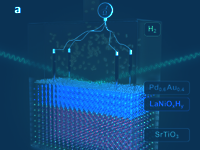
“Understanding the Role of Hydrogen and Oxygen in Electronic Phase Changes of Nickelates”
Advanced Functional Materials (open access)
Understanding the Role of Hydrogen and Oxygen in Electronic Phase Changes of Nickelates
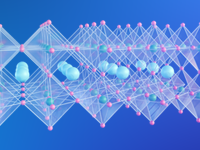
“Synergistic Polar States by Selective Atomic Gradients”
Research Square (open access)
Synergistic polar states by selective atomic gradients
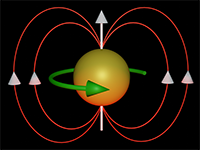
Highly Efficient Room-Temperature Spin-Orbit-Torque Switching in a Van der Waals Heterostructure of Topological Insulator and Ferromagnet
All-Van der Waals (vdW)-material-based heterostructures with atomically sharp interfaces offer a versatile platform for high-performing spintronic functionalities at room temperature. One of the key components is vdW topological insulators (TIs), which can produce a strong spin-orbit-torque (SOT) through the spin-momentum locking of their topological surface state (TSS). However, the relatively low conductance of the TSS introduces a current leakage problem through the bulk states of the TI or the adjacent ferromagnetic metal layers, reducing the interfacial charge-to-spin conversion efficiency (qICS). Here, a vdW heterostructure is used consisting of atomically-thin layers of a bulk-insulating TI Sn-doped Bi1.1Sb0.9Te2S1 and a room-temperature ferromagnet Fe3GaTe2, to enhance the relative current ratio on the TSS up to ≈20%. The resulting qICS reaches ≈1.65 nm−1 and the critical current density Jc ≈0.9 × 106 Acm−2 at 300 K, surpassing the performance of TI-based and heavy-metal-based SOT devices. These findings demonstrate that an all-vdW heterostructure with thickness optimization offers a promising platform for efficient current-controlled magnetization switching at room temperature.

“Magnetotransport and Electronic Structure of EuAuSb: A Candidate Antiferromagnetic Dirac Semimetal”
APS Physical Review B (subscription required)
Magnetotransport and Electronic Structure of EuAuSb

“Dedicated SAW Oscillator for Sensing Applications”
IEEE Instrumentation & Measurement Technology Conference Proceedings (subscription required)
Dedicated SAW Oscillator for Sensing Applications
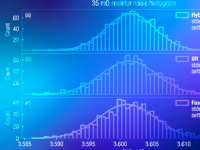
“Hybrid Filter for Lock-in Amplifiers”
Review of Scientific Instruments (subscription required)
Hybrid filter for lock-in amplifiers
Lock-in amplifiers are instrumental in the precise measurement of extremely small AC signals within high-noise environments. Traditionally, noise reduction in these instruments relies on infinite impulse response (IIR) filters, which can necessitate prolonged settling times to ensure the acquisition of accurate, statistically independent data. While moving average filters offer faster settling times, their non-monotonic frequency response may not be optimal for noise reduction. Conversely, IIR filters frequently realized as N-pole RC filters exhibit a monotonic frequency response conducive to effective noise reduction. This study presents a hybrid filter architecture that combines a short IIR filter with a longer moving average finite impulse response filter. The objective is to enhance noise reduction as quantified by the filter’s equivalent noise bandwidth (ENBW). Theoretical analysis is provided to derive the step response, settling time, frequency response, and ENBW of the hybrid filter configuration. Design methodologies are outlined for hybrid filters that either match the settling time of an N-pole RC filter while achieving a lower ENBW or maintain the ENBW of an N-pole RC filter but with significantly faster settling time. The performance of the hybrid filter is validated through noise measurements of low-value resistors and thermal noise of larger resistors, with results compared to theoretical predictions.
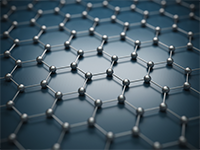
“Contact Engineering for Graphene Nanoribbon Devices”
AIP Applied Physics Letters (subscription required)
Contact Engineering for Graphene Nanoribbon Devices
Graphene nanoribbons (GNRs), when synthesized with atomic precision by bottom–up chemical approaches, possess tunable electronic structure, and high theoretical mobility, conductivity, and heat dissipation capabilities, which makes them an excellent candidate for channel material in post-silicon transistors. Despite their immense potential, achieving highly transparent contacts for efficient charge transport—which requires proper contact selection and a deep understanding of the complex one-dimensional GNR channel-three-dimensional metal contact interface—remains a challenge. In this study, we investigated the impact of different electron-beam deposited contact metals—the commonly used palladium (Pd) and softer metal indium (In)—on the structural properties and field-effect transistor performance of semiconducting nine-atom wide armchair GNRs. The performance and integrity of the GNR channel material were studied by means of a comprehensive Raman spectroscopy analysis, scanning tunneling microscopy (STM) imaging, optical absorption calculations, and transport measurements. We found that, compared to Pd, In contacts facilitate favorable Ohmic-like transport because of the reduction of interface defects, while the edge structure quality of GNR channel plays a more dominant role in determining the overall device performance. Our study provides a blueprint for improving device performance through contact engineering and material quality enhancements in emerging GNR-based technology.
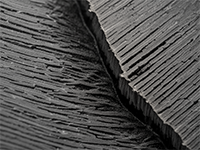
“Electro-mechanical Contact Behavior of Rough Surfaces in Extreme Temperature”
Tribology International (subscription required)
Electro-Mechanical Contact Behavior of Rough Surfaces in Extreme Temperature

“Atomically Precise Graphene Nanoribbon Transistors with Long-Term Stability and Reliability”
ACS Nano (open access)
Atomically Precise Graphene Nanoribbon Transistors with Long-Term Stability and Reliability

“Structure and Superconductivity of Hydrogenated TiZr Alloys Under High Pressure”
ACS Applied Energy Materials (subscription required)








